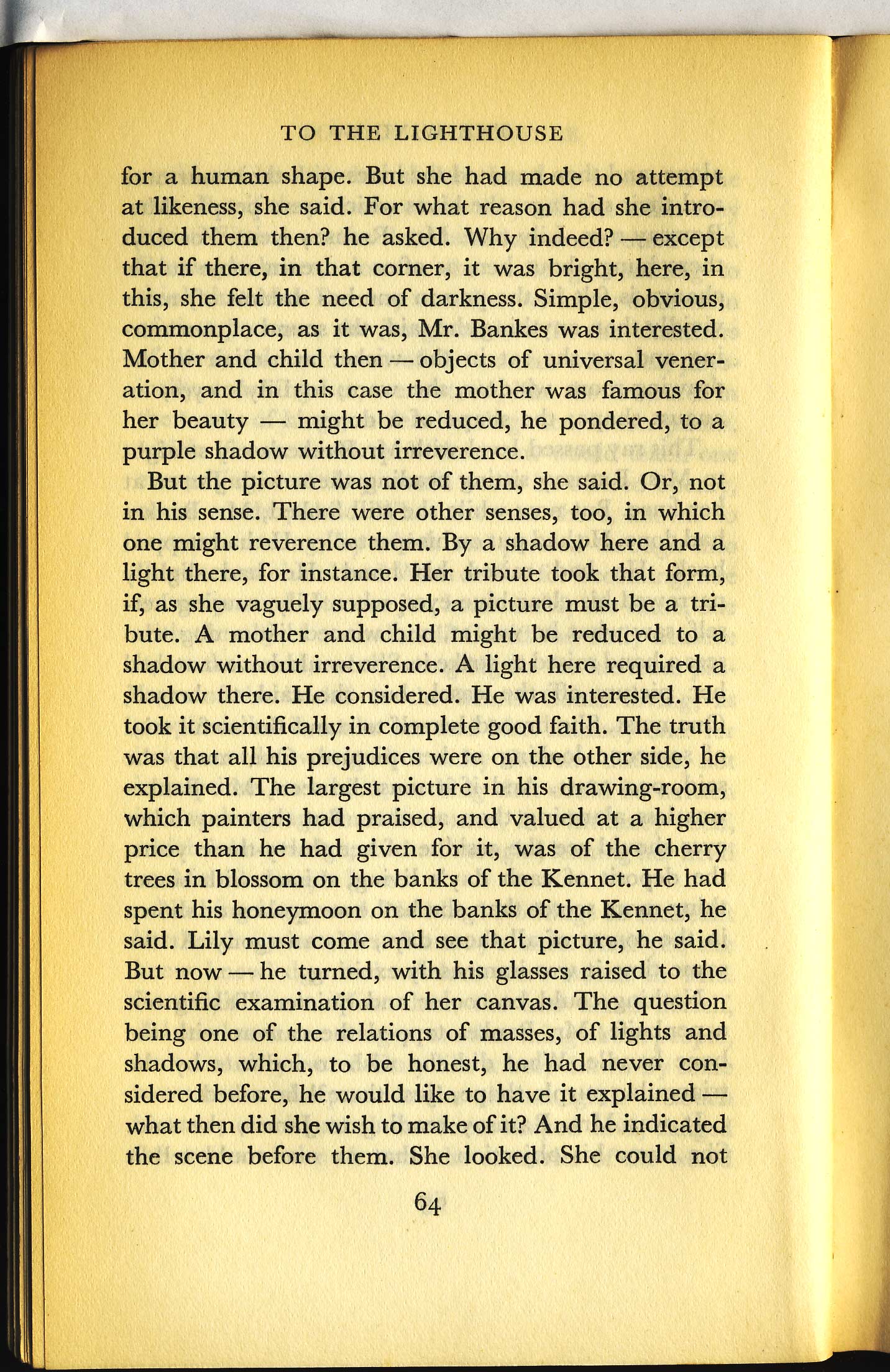
TO THE LIGHTHOUSEfor a human shape. But she had made no attemptat likeness, she said. For what reason had she intro-duced them then? he asked. Why indeed? — exceptthat if there, in that corner, it was bright, here, inthis, she felt the need of darkness. Simple, obvious,commonplace, as it was, Mr. Bankes was interested.Mother and child then — objects of universal vener-ation, and in this case the mother was famous forher beauty — might be reduced, he pondered, to apurple shadow without irreverence.But the picture was not of them, she said. Or, notin his sense. There were other senses, too, in whichone might reverence them. By a shadow here and alight there, for instance. Her tribute took that form,if, as she vaguely supposed, a picture must be a tri-bute. A mother and child might be reduced to ashadow without irreverence. A light here required ashadow there. He considered. He was interested. Hetook it scientifically in complete good faith. The truthwas that all his prejudices were on the other side, heexplained. The largest picture in his drawing-room,which painters had praised, and valued at a higherprice than he had given for it, was of the cherrytrees in blossom on the banks of the Kennet. He hadspent his honeymoon on the banks of the Kennet, hesaid. Lily must come and see that picture, he said.But now—he turned, with his glasses raised to thescientific examination of her canvas. The questionbeing one of the relations of masses, of lights andshadows, which, to be honest, he had never con-sidered before, he would like to have it explained —what then did she wish to make of it? And he indicatedthe scene before them. She looked. She could not64









